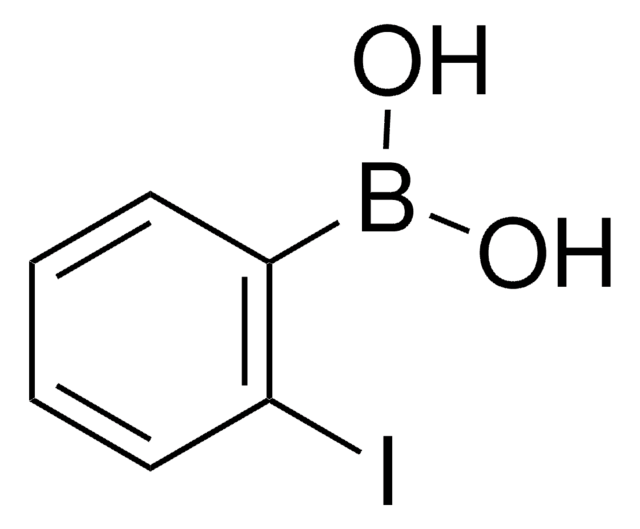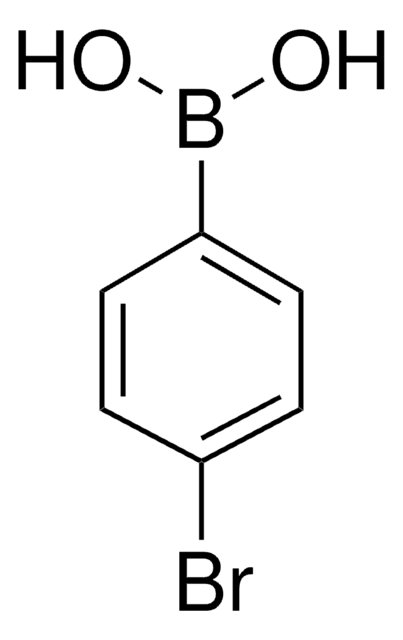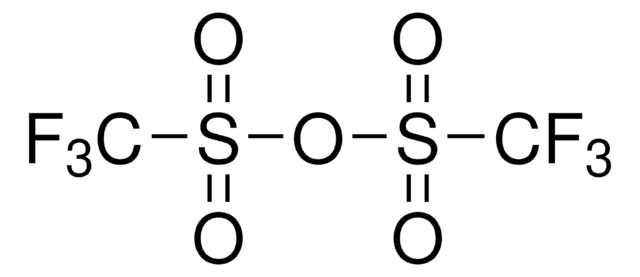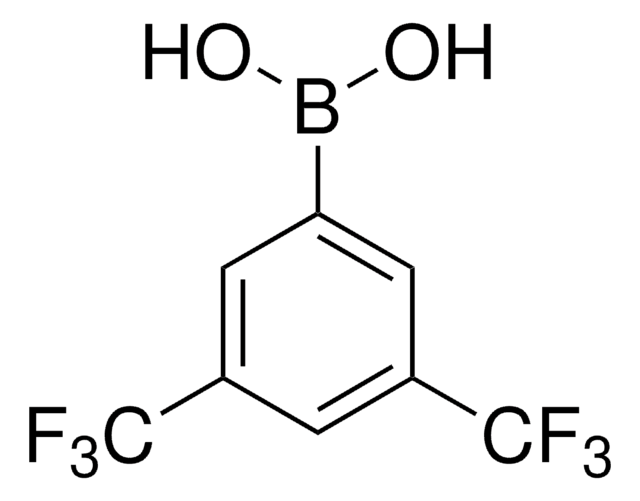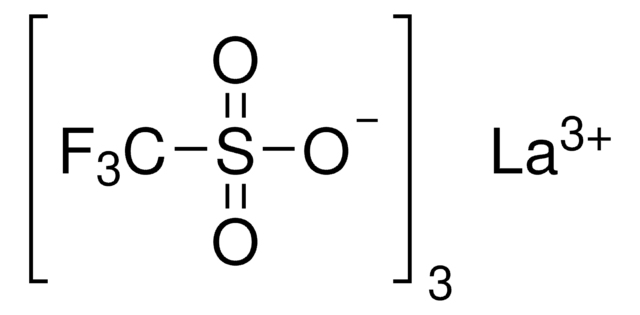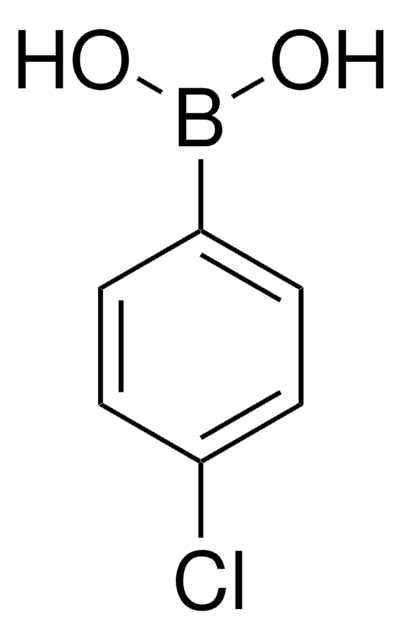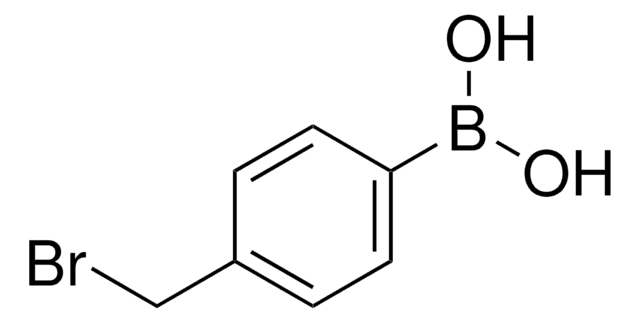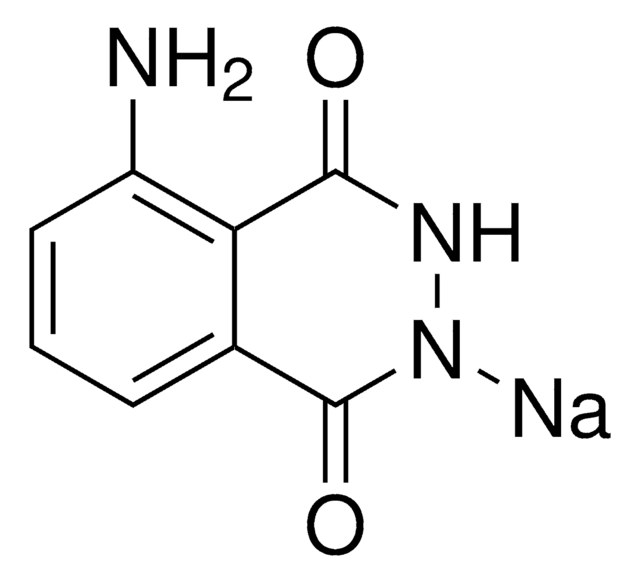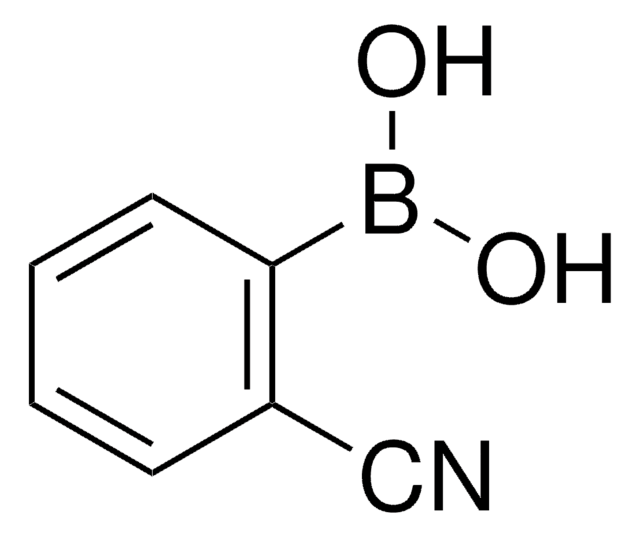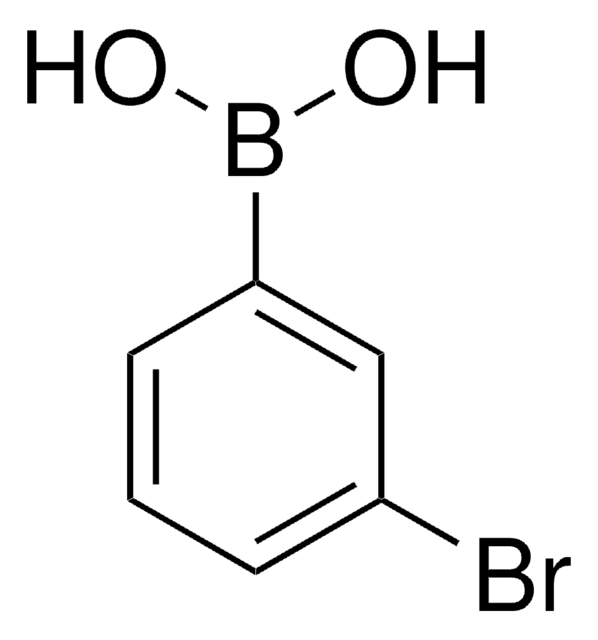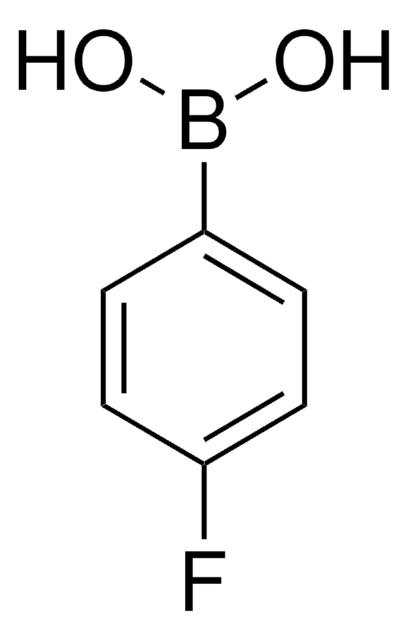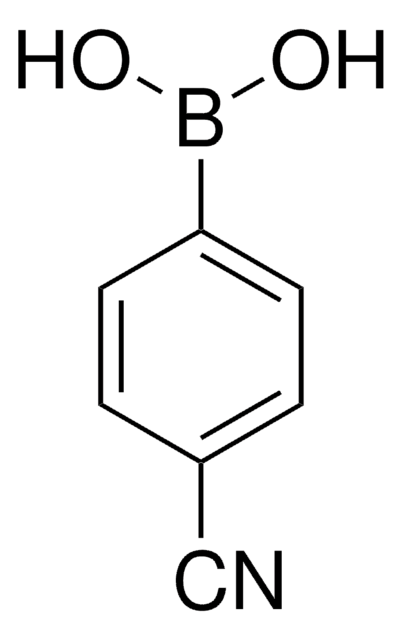Wszystkie zdjęcia(2)
Kluczowe dokumenty
471933
4-Iodophenylboronic acid
≥95.0%
Synonim(y):
B-(4-iodophenyl)-boronic acid, p-Iodophenylboronic acid, p-iodo-benzeneboronic acid
Zaloguj sięWyświetlanie cen organizacyjnych i kontraktowych
About This Item
Wzór liniowy:
IC6H4B(OH)2
Numer CAS:
Masa cząsteczkowa:
247.83
Numer MDL:
Kod UNSPSC:
12352103
Identyfikator substancji w PubChem:
NACRES:
NA.22
Polecane produkty
Poziom jakości
Próba
≥95.0%
mp
326-330 °C (lit.)
grupa funkcyjna
iodo
ciąg SMILES
OB(O)c1ccc(I)cc1
InChI
1S/C6H6BIO2/c8-6-3-1-5(2-4-6)7(9)10/h1-4,9-10H
Klucz InChI
PELJYVULHLKXFF-UHFFFAOYSA-N
Powiązane kategorie
Zastosowanie
Reagent used for
Reagent used in Preparation of
- Copper-mediated ligandless aerobic fluoroalkylation
- Palladium-catalyzed aerobic oxidative cross-coupling reactions
- Recyclable magnetic-nanoparticle-supported palladium catalyst for the Suzuki coupling reactions
- Oxidative hydroxylation using a copper (Cu) catalyst
- Ligand-free palladium-catalyzed Suzuki-Miyaura cross-coupling
- Homocoupling using gold salts as a catalyst
- Ruthenium (Ru)-catalyzed cross-coupling
- CuI-catalyzed Suzuki coupling reactions
- Palladium-catalyzed domino Heck-Mizoroki/Suzuki-Miyaura reactions
- Manganese triacetate-mediated radical additions of arylboronic acids to alkenes
Reagent used in Preparation of
- Pleuromutilin derivatives for ribosomal binding and antibacterial activity via "Click Chemistry"
- Liquid crystalline polyacetylene derivatives
Inne uwagi
Contains varying amounts of anhydride
Ta strona może zawierać tekst przetłumaczony maszynowo.
Hasło ostrzegawcze
Warning
Zwroty wskazujące rodzaj zagrożenia
Zwroty wskazujące środki ostrożności
Klasyfikacja zagrożeń
Acute Tox. 4 Oral - Eye Irrit. 2 - Skin Irrit. 2 - STOT SE 3
Organy docelowe
Respiratory system
Kod klasy składowania
11 - Combustible Solids
Klasa zagrożenia wodnego (WGK)
WGK 3
Temperatura zapłonu (°F)
Not applicable
Temperatura zapłonu (°C)
Not applicable
Środki ochrony indywidualnej
dust mask type N95 (US), Eyeshields, Gloves
Wybierz jedną z najnowszych wersji:
Masz już ten produkt?
Dokumenty związane z niedawno zakupionymi produktami zostały zamieszczone w Bibliotece dokumentów.
Klienci oglądali również te produkty
Samir Yahiaoui et al.
The Journal of organic chemistry, 76(8), 2433-2438 (2011-03-23)
A palladium(II)-catalyzed Heck-Mizoroki/Suzuki-Miyaura domino reaction involving metal coordinating dimethylaminoethyl vinyl ethers and a number of electron-rich and electron-deficient arylboronic acids has been developed. Through variation of the temperature and the concentration of the p-benzoquinone (p-Bq) ligand/reoxidant, conditions for the robust
An efficient and recyclable magnetic-nanoparticle-supported palladium catalyst for the Suzuki coupling reactions of organoboronic acids with alkynyl bromides
X. Zhang, et al.,
Synthesis, 18, 2975-2983 (2011)
Hong Li et al.
Chemical communications (Cambridge, England), 47(27), 7880-7882 (2011-06-11)
The first ruthenium-catalyzed cross-coupling of aldehydes with arylboronic acids is reported. Various aliphatic and aromatic aldehydes are transformed to the corresponding arylketones. A total of 31 examples with moderate to excellent yields are presented, together with the results of an
Kazuhiko Tsukagoshi et al.
Journal of chromatography. A, 1123(1), 106-112 (2006-05-24)
Molecular recognition of mono- and disaccharides was performed making use of the interaction between their diol groups and p-iodophenylboronic acid in capillary electrophoresis (CE) with a chemiluminescence (CL) detection system. p-Iodophenylboronic acid acted as an enhancer for luminol-horseradish peroxidase-hydrogen peroxide
Disubstituted Liquid Crystalline Polyacetylene Derivatives That Exhibit Linearly Polarized Blue and Green Emissions
San Jose, B. A.; et al.
Macromolecules, 44, 6288-6302 (2011)
Nasz zespół naukowców ma doświadczenie we wszystkich obszarach badań, w tym w naukach przyrodniczych, materiałoznawstwie, syntezie chemicznej, chromatografii, analityce i wielu innych dziedzinach.
Skontaktuj się z zespołem ds. pomocy technicznej

